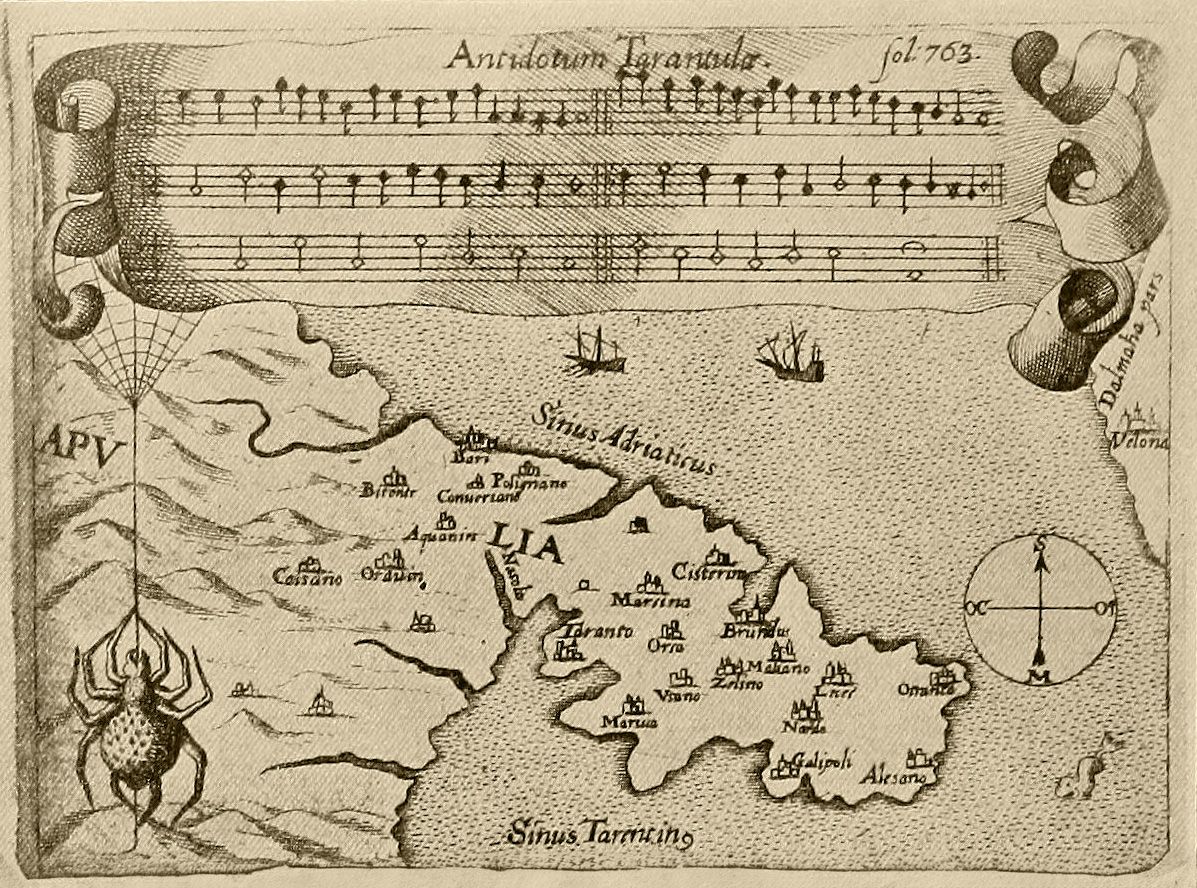Tarantism: The Dance of Desire and Delirium

In the heart of Southern Italy, nestled in the region of Apulia, there exists a tradition so captivating, so enchanting, that it has danced its way through centuries of folklore and history. This tradition, known as Tarantism, is a cultural phenomenon that intertwines music, dance, and a touch of the mystical. It is a tale of spiders and saints, of passion and possession, of healing and hysteria.
Origins and Legends
Tarantism is believed to have originated in the 11th century, though its roots may stretch back even further, into the depths of ancient history. The name itself is derived from the city of Taranto, a coastal town in Apulia, and the local species of wolf spider, known as the "tarantula". However, this is not the hairy, large-fanged creature that might spring to mind when you hear the word 'tarantula'. The tarantula of Taranto is a relatively small, innocuous creature, whose bite is generally harmless to humans.
The legend of Tarantism tells a different story. According to folklore, the bite of the tarantula would send the victim into a state of melancholy, restlessness, and a host of other symptoms. The only cure? A frenzied dance known as the Tarantella, performed to a specific, rhythmic music. This dance was believed to draw out the poison, restoring the victim to health.
The Dance of Healing: Tarantella
The Tarantella is a spectacle to behold. It is characterized by its fast tempo, swirling movements, and the palpable energy it exudes. The dancers, often women, would lose themselves in the music, their bodies becoming vessels for the rhythm, their movements an expression of their inner turmoil and desire for healing. The dance could last for hours, even days, until the dancer collapsed from exhaustion, supposedly cured of the spider's venom.

Tarantism: A Social Phenomenon
But Tarantism is more than just a dance. It is a social phenomenon, a form of collective catharsis. In a society where expressions of individuality, particularly for women, were often suppressed, the Tarantella offered an outlet, a space where one could freely express their emotions, their desires, their fears. It was a form of rebellion, a defiance of societal norms, cloaked in the guise of a healing ritual.
Tarantism Today
Over the centuries, the belief in Tarantism has waned, and the tradition has evolved. The spider's bite is no longer the central focus. Instead, the dance has become a symbol of liberation, a celebration of life and vitality. The Tarantella is still performed today, during festivals and celebrations, its infectious rhythm inviting everyone to partake in the dance of desire and delirium.
Conclusion
Tarantism, with its rich history and captivating traditions, is a testament to the power of music and dance, and the human desire for expression and liberation. It is a dance that has spun its web across centuries, ensnaring the hearts and souls of those who partake in its rhythm. It is a dance that invites us to let go of our inhibitions, to surrender to the music, and to find healing in the heart of the frenzy.
So, the next time you hear the rhythmic strumming of a guitar, the beating of a tambourine, and the swift, swirling movements of the Tarantella, remember the tale of Tarantism. Remember the dance of desire and delirium, the dance that heals, the dance that liberates. And perhaps, you too will be caught in its enchanting web.
Epilogue
I hope you enjoyed this journey into the heart of Tarantism. If you have any questions or would like to learn more about this fascinating tradition, feel free to reach out. After all, the dance floor of knowledge is always open, and the music of curiosity never stops playing. Until then, keep dancing to the rhythm of your own beat, and remember - life, like the Tarantella, is a dance best performed with passion, energy, and a touch of the mystical.




